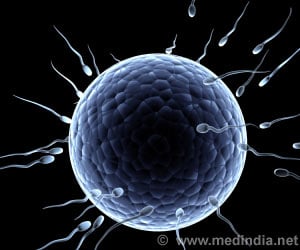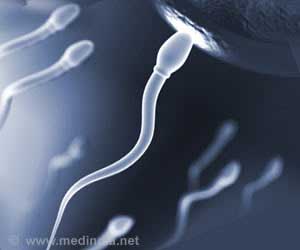Environmental contaminants were found in the sperm and also in the testes of the dogs. The contaminants were found in higher amounts that can disrupt sperm motility and viability.

‘Male pups born to the stud dogs with the declining semen quality had an increased incidence of cryptorchidism- testes of pups fail to descend correctly into the scrotum.
’





The researchers hope that the latest results may offer a new piece of the puzzle over the reported significant decline in human semen quality. Dr Richard Lea, Reader in Reproductive Biology in the University's School of Veterinary Medicine and Science, who led the research said, "This is the first time that such a decline in male fertility has been reported in the dog, and we believe this is due to environmental contaminants, some of which we have detected in dog food and in the sperm and testes of the animals themselves.”
"While further research is needed to conclusively demonstrate a link, the dog may indeed be a sentinel for humans - it shares the same environment, exhibits the same range of diseases, many with the same frequency and responds in a similar way to therapies."
The samples were collected from stud dogs at assistance dogs breeding center over the course of 26 years. Professor Gary England, Foundation Dean of the School of Veterinary Medicine and Science and Professor of Comparative Veterinary Reproduction, who oversaw the collection of semen said, "The strength of the study is that all samples were processed and analyzed by the same laboratory using the same protocols during that time and consequently the data generated is robust."
Five specific breeds of dogs were studied - Labrador retriever, golden retriever, curly coat retriever, border collie and German shepherd. About 42 to 97 dogs were studied every year.
Advertisement
The researchers found a drastic decrease in the percentage of normal motile sperm over the past 26 years. The sperm motility declined by 2.5% every year between 1988 and 1998. The stud dogs of reduced fertility were removed from the study, sperm motility from 2002 to 2014 continued to decline at a rate of 1.2% per year.
Advertisement
Environmental contaminants were found in the sperm collected from the same breeding populations of dogs and also in the testes recovered from dogs undergoing routine castration. The environmental contaminants were found in higher concentrations that can disrupt sperm motility and viability when tested.
The chemicals that disrupted sperm quality were also discovered in a range of commercially available dog foods.
Dr Lea added, "We looked at other factors which may also play a part, for example, some genetic conditions do have an impact on fertility. However, we discounted that because 26 years is simply too rapid a decline to be associated with a genetic problem."
"The Nottingham study presents a unique set of reliable data from a controlled population which is free from these factors. This raises the tantalizing prospect that the decline in canine semen quality has an environmental cause and begs the question whether a similar effect could also be observed in human male fertility," said Dr Lea.
The study is published in the academic journal Scientific Reports.
Source-Medindia












